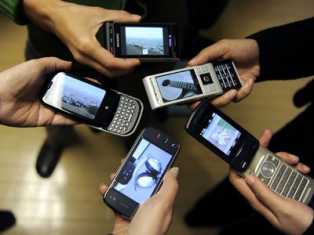This is a list of smartphone apps that could deputize as a remote control used in controlling household appliances.

In the 1950s came the first remote controls for TV. They were initially connected to a cable, but soon became completely wireless.
Then came the VHS player, the DVD player, the DTT, the Blu-ray, among several others. The universal remotes saved us from needing a remote control for each device, but will it not be easier to control everything from a mobile phone? Of course. The best thing is that there are quite a few applications for this.
LG TV remote, VIERA remote and other TV manufacturers’ apps. Although the apps offered by TV manufacturers were not the first applications available, these are a safe option. Realising that mobile phones are today part of the very television experience for users everywhere, manufacturers decided to launch specific apps for their own TV sets.
LG, for example, has been offering since 2010 its LG TV remote for Android and iOS. LG has recently launched a new version that includes features allowing searches and interacting with Internet content through the Korean brand’s Smart TVs.
Sharing this same philosophy, Panasonic launched its remote, while Sony did the same with its media remote. Others, such as Samsung and HTC, have also their own applications but are increasingly committed to other systems included in their own phones with infrared, like WhatchOn in the Samsung Galaxy S4 or Sense TV in the HTC One.
The greatest benefits coming from these solutions provided by manufacturers are, in the first place, the inclusion of almost all the functions of original remotes and, second, that compatible models tend to work quite well, partly because of the reviews users post on the various app stores. The main drawback is that these solutions don’t work with all TV models and that these need to be connected to the Internet.
Roomie and Beacon, apps imitating universal remotes Roomie may be one of the most comprehensive solutions on the market. It does not only allow you to remotely control from your tablet or smartphone your TV, your Blu-ray and media players such as Apple TV or DVR systems, but also allows you to play media content from sources such as iTunes and Netflix.
To control a device compatible with Roomie, you need to connect it to the local home network or use an infrared adapter. This way, it is possible to remotely manage other electronic devices without IP connectivity included, such as sound systems, CD players, lighting, etc.
An alternative very similar to Roomie is Beacon, even if its approach is different. This application uses a central device emitting infrared that can be controlled with your phone. If for instance you press ‘1’, the application informs immediately the device Beacon. This latter device is then responsible for translating the command into infrared for the television to understand it.
A long way ahead Unfortunately, most of these applications have their limitations. Those that do not use adapters or additional devices are only available for specific models and require TV sets connected to the Internet since most of the current mobile devices do not have an infrared port (the one used by traditional remotes).
Another option for unsupported devices will be buying adapters, as in the case of Roomie, or other devices enabling us to translate IP traffic into infrared as does Beacon and other converters in the market. In these cases, the drawback is that you need to install additional hardware.
With the rise of tablets and smart TVs, it is not farfetched that in the near future we will see new proposals and developments in this field. For the time being, Samsung and HTC have included infrared in their handsets for this purpose.
Original posted by unlimitedapps.xtgem.com








This post has no comments - be the first one!